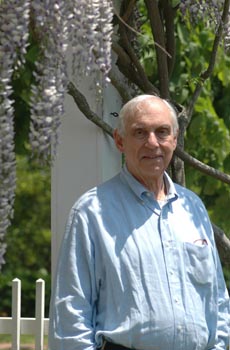A Fishap On Shore
A Fishap On Shore
Scott (Scuppy) Cisco of Montauk had only minor injuries after his tractor trailer overturned on Route 27 in Southampton Monday morning - spilling a load of whiting bound for New Jersey.
Because he was all right, there was room for a few jokes around the docks about how the nearby McDonald's, 7-Eleven, and Burger King would be featuring fish sandwiches for weeks. The accident occurred at the four-way intersection of Route 27 and County Road 39.
As it turned out, only about 1,200 of the estimated 15,000 pounds of fish on board were lost. The rest were retrieved with the help of a team from the Shinnecock Fishermen's Cooperative of Hampton Bays, and of a tractor trailer driver returning "empty" to his Sag Harbor base.
A tow truck helped right the capsized tractor and torn trailer.
The Totes Flew
Mr. Cisco drives for the J and H Transfer company of Riverhead, which handles much of the fish shipments from eastern Long Island. He said he had left Montauk at 11:30 a.m. after packing out the catch of the dragger Kallie Lin Elizabeth at the Inlet Seafood docks.
He was approaching the Southampton intersection about an hour later, he said, when a car pulled out from the 7-Eleven.
"I swerved and at the same time I was going around the bend. The weight shifted and it was too much. The truck went over and the trailer hit a telephone pole. The roof gave way and the totes went flying out," Mr. Cisco said, referring to the plastic boxes, each filled with about 60 pounds of whiting topped with ice.
"If the cab had hit the pole, I would probably be dead," he said.
Truck Totaled
Sitting next to him in the cab was his dog, Tigger. Mr. Cisco was treated and released from Southampton Hospital, and Tigger got thumbs-up after a visit to a vet. Mr. Cisco said both were bruised, but otherwise okay.
Police reportedly closed the busy intersection of several hours.
Mr. Cisco said that by the time he got back from the hospital, at about 3 p.m., most of the fish had been loaded into the other truck. "They'll be able to salvage the engine and tranny [transmission] from the tractor, and the reefer [refrigeration] unit from the trailer. The rest was totaled. My boss told me to pick out another truck," Mr. Cisco said.
The owner of the Kallie Lin Elizabeth, Dan Stavola of Montauk, said yesterday that he'd been away and was just getting the details about the crash.
"The load's insured. That doesn't matter. Scott's a local guy. He wasn't hurt. That's the main thing," he said.


